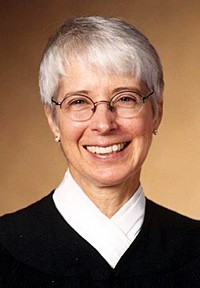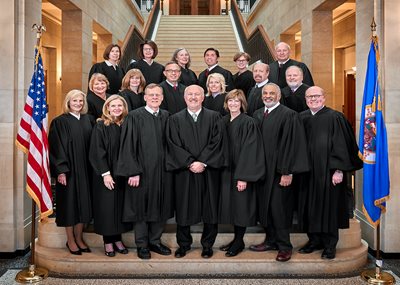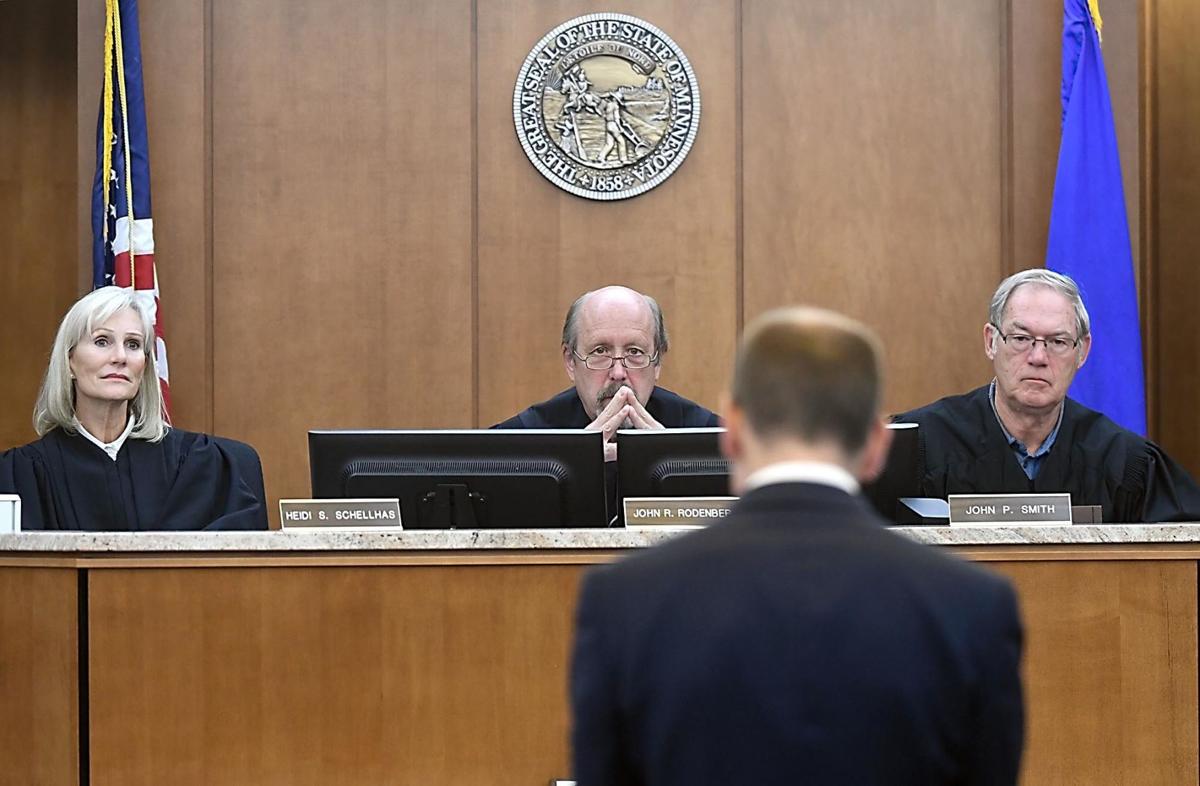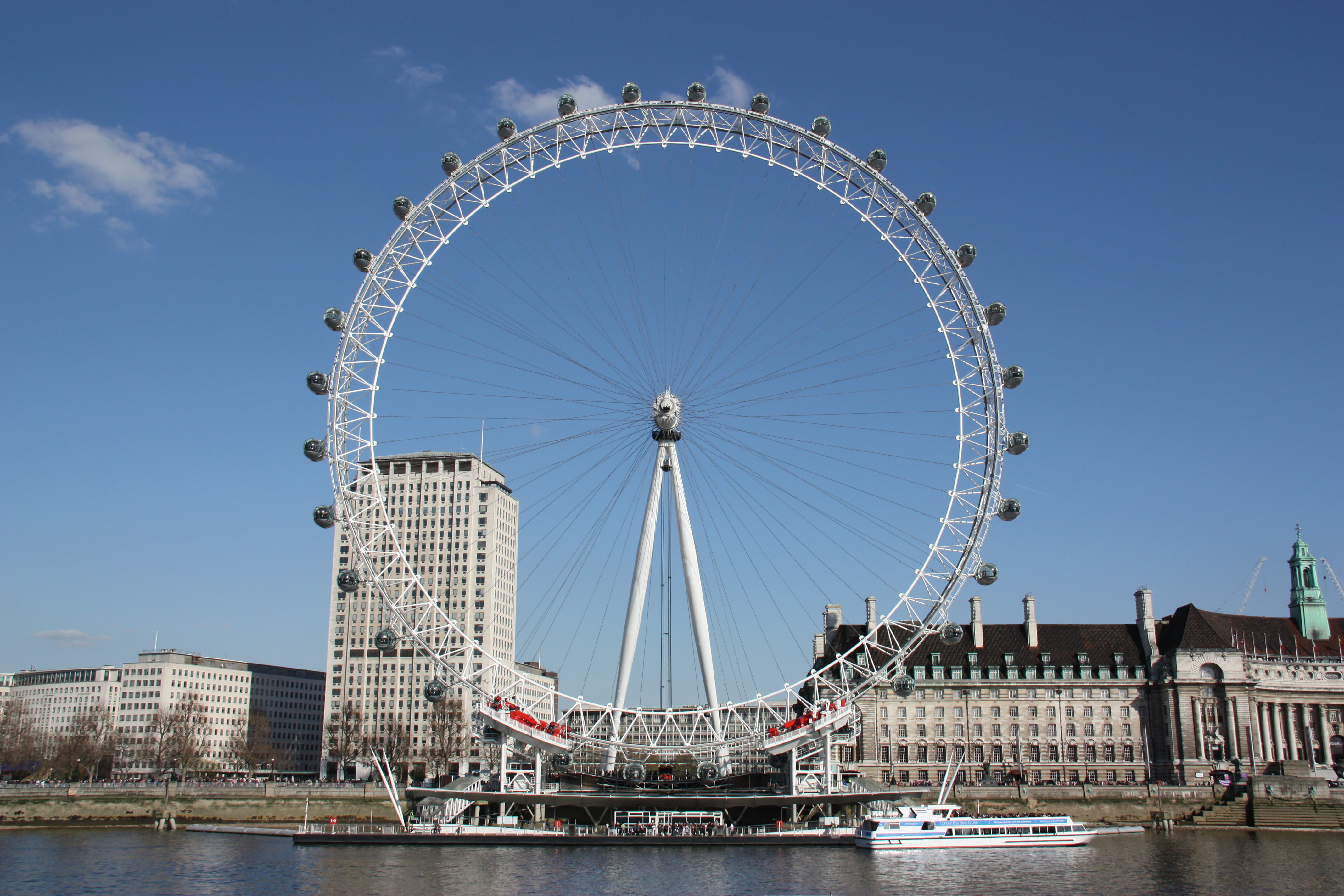In 2000 the Minnesota Wild began their first season. The state was awarded an expansion franchise in 1997, which was officially named the Wild in 1998.
That same year, Terri Stoneburner, an attorney with Farrish Johnson for many years, was appointed to the Minnesota Court of Appeals by Governor Ventura and remained there until her retirement in 2014.
Minnesota Wild
The Minnesota Wild were the first NHL franchise in Minnesota since the North Stars moved to Dallas in 1993. They were the only Minneapolis-St. Paul area major professional league franchise to play in St. Paul until Minnesota United FC move to their new home, Allianz Field in 2019.

The Wild logo used from 2000 to 2010
The State of Minnesota adopted legislation in April 1998 to loan $65 million to the City of St. Paul to fund half of the estimated costs for the Excel Energy Center. The Wild lost their first game of the 2000-2001 season, 3-1, to the Mighty Ducks of Anaheim and had their first win against the Tampa Bay Lightning five games later.
Terri Stoneburner Appointed to Minnesota Court of Appeals
After graduating from Hanover College, Terri Stoneburner joined the Peace Corps working as a volunteer in West Africa before attending law school at the University of Washington. She worked as director of Legal Aid to State Prisoners and was active with Law Women’s Caucus and the Lawyer’s Guide. She traveled to Alaska and worked as an attorney for the Alaska Commission for Human Rights.
Stoneburner joined Farrish Johnson Law Office in 1979 and was also an adjunct profession at Mankato State University. She was appointed Judge of the Fifth Judicial District by Governor Rudy Perpich in 1990. Stoneburner was then appointed to the Minnesota Court of Appeals by Governor Jesse Ventura in 2000. Current Farrish Johnson attorney, Joseph Gangi, clerked as a staff attorney for Judge Stoneburner at the Court of Appeals.

Judge Terri J. Stoneburner
The Minnesota Court of Appeals, which began on November 1, 1983, provides citizens of Minnesota with prompt and deliberate review of all final decisions of the trial courts, state agencies, and local governments. The only exceptions to this grant of jurisdiction are sate wide election contests, first-degree murder cases, and appeals from the Minnesota Tax Court and Minnesota Workers’ Compensation Court of Appeals, all of which go directly to the Minnesota Supreme Court.
As the error-correcting court, the Court of Appeals handles most of the appeals, allowing the Minnesota Supreme Court to spend time resolving difficult constitutional and public policy cases. The nineteen judges of the Court of Appeals are elected to renewable six-year terms and a mandatory retirement at the age of 70.

The current Minnesota Court of Appeals
The Court of Appeals’ decisions are the final ruling in about 95% of the 2,000 to 2,400 appeals every year. About 5% of the Court’s decisions are accepted by the Minnesota Supreme Court for further reviews.
By law, the Court must issue a decision within 90 days of oral arguments. If no oral argument is held, a decision is due within 90 days of the case’s scheduled conference date. This deadline is the shortest imposed on any appellate court in the nation. As part of the Court’s effort to expedite justice and to make access to the appellate system less burdensome and expensive, the Court’s 19 judges sit in three-judge panels and travel to locations throughout Minnesota to hear oral arguments.

Minnesota Court of Appeals judges (from left) Heidi Schellhas, John Rodenberg and John Smith listen to arguments during a visit to the Blue Earth County Justice Center in September 2018
Learn more about Terri Stoneburner in our previous Witness to History post here.
At a Glance: 2000
January 10, 2000—American Online announces an agreement to purchase Time Warner for $165 billion, reflecting the growth in internet usage and making it one of the largest media companies in the country.
March 9, 2000—The world’s largest Ferris wheel, The London Eye, opens to the public. On the south bank of the River Thames in London, it is the most popular paid tourist attraction in the United Kingdom with over 3.75 million visitors annually.

The London Eye from across the River Thames
April 1 – The 2000 United States Census determines the resident population of the United States to be 281,421,906.
April 19, 2000—Oprah Winfrey debuts the first issue of O, The Oprah Magazine.

May 11, 2000—Tate Modern art gallery opens in London by the Queen and is one of the largest museums of modern and contemporary art in the world.
June 1, 2000—For the first time since 1851, the United States does not participate in a major World’s Fair, the Hannover 2000 World Expo, despite a record number of international participants. Attendance is projected to be 40 million but less than half, 18.1 million visit the Hannover event.
July 8, 2000—Venus Williams defeats Lindsay Davenport in two sets for her first Wimbledon championship. It is Williams’s first title of the year and her tenth overall. It is her first career grand slam title.
September 29, 2000—The Xcel Energy Center opens in St. Paul, built on the site of the demolished St. Paul Civic Center and home of the Minnesota Wild.

October 11, 2000—Space Shuttle Discovery and STS-92 launch from NASA’s Kennedy Space Center of the 100th flight of the space shuttle program.
Learn more about events in 2000 in our previous Witness to History post here.

